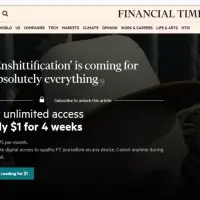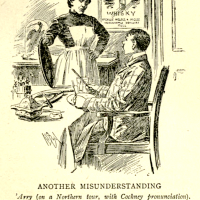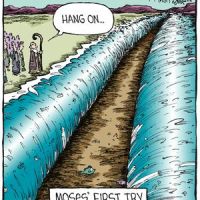 I was thrilled to recently record a podcast on The Hobbit film trilogy. William O’Flaherty is producer and host of All About Jack, as well as the energy behind Essential C.S. Lewis, and a guest blogger here on A Pilgrim in Narnia. Here’s the link to the 1st podcast:
I was thrilled to recently record a podcast on The Hobbit film trilogy. William O’Flaherty is producer and host of All About Jack, as well as the energy behind Essential C.S. Lewis, and a guest blogger here on A Pilgrim in Narnia. Here’s the link to the 1st podcast:
http://www.podbean.com/media/player/h8xmn-533ad6/initByJs/1/auto/1?skin=1
And here’s the 2nd, just released yesterday:
http://allaboutjack.podbean.com/e/the-hobbit-movies-vs-the-book-part-2/
Check it out, and feel free to agree–or more likely, disagree–in the comments below. I came out as someone who enjoyed the films, and there is some lively debate between myself, Crystal Hurd, and Charlie Starr. I suspect some of you will disagree vehemently. Feel free also to include your reviews in the comments below.
Since we are here, I thought I would use this as a blogroll to capture the Tolkien blogs from from the last the last three years.
 The Battle of Five (or Six, or Seven) Armies/Blogs
The Battle of Five (or Six, or Seven) Armies/Blogs
With the release of the third Hobbit film, The Battle of Five Armies, I instigated a Battle of 5 Blogs. Just as we are unclear exactly how many armies were actually fighting in Peter Jackson’s adaptation–even the book was a bit unclear–our 5 Blogger Battle became a 6-way fight. I blame Peter Jackson.
My own entry was “The Hobbit as a Living Text,” a blog I still like and an idea I have been building on since. Here is a list of the other five bloggers. You’ll be amazed to see the great range of discussion that erupts out of this throw down. Pretty cool:
James Moffett of A Tolkienist’s Perspective
Matthew Rettino at The Vinciolo Journal
Sørina Higgins of The Oddest Inkling
Crystal Hurd of CrystalHurd.com
Kat Sas of Raving Sanity
 Other Film Reviews
Other Film Reviews
When the teaser trailer of the third film, The Battle of Five Armies, was released, I wrote “Faint Hope for The Hobbit.” I said above, in a sort of confession, that I quite liked the way the trilogy wrapped up. The huge comment section in the original blog shows not everyone agrees.
My review of An Unexpected Journey captures the tug back and forth I feel about the films. I called it, “Not All Adventures Begin Well,” and it is a much more positive review than many of the hardcore Tolkien fans or academics. And it gives this cool dwarf picture:

“What Have We Done?” are the words breathed in the dying moments of the second installation of The Hobbit adaptation, The Desolation of Smaug. In this review I think about what it means to do film adaptations. While I do not hate this Hobbit trilogy, I think that Peter Jackson just got lost a bit.
Book Reviews
 There was no greater friend of The Hobbit in the early days than C.S. Lewis. In “The Unpayable Debt of Writing Friends,” I talk about how, if it wasn’t for Lewis, Tolkien may never have finished The Hobbit, and the entire Lord of the Rings legendarium would be in an Oxford archive somewhere. Lewis not only encouraged the book to completion, but reviewed The Hobbit a few times. Here is C.S. Lewis’ original review in The Times Literary Supplement.
There was no greater friend of The Hobbit in the early days than C.S. Lewis. In “The Unpayable Debt of Writing Friends,” I talk about how, if it wasn’t for Lewis, Tolkien may never have finished The Hobbit, and the entire Lord of the Rings legendarium would be in an Oxford archive somewhere. Lewis not only encouraged the book to completion, but reviewed The Hobbit a few times. Here is C.S. Lewis’ original review in The Times Literary Supplement.
Lewis is not the only significant reviewer of The Hobbit. When he was 8, my son Nicolas published his review, just as the first film was coming to the end of its run. When I was posting Nicolas’ review, I came across another young fellow–the son of Stanley Unwin, the first publisher to receive the remarkable manuscript of The Hobbit. Unsure how children would respond, he paid his son, Rayner, to write a response to the book. You can read about it here: “The Youngest Reviewers Get it Right, or The Hobbit in the Hands of Young Men.”
I realize as I do this survey that I haven’t written a review of the book! That’s okay: C.S. Lewis and my son are better sources anyway.
 The Read-Aloud Hobbit
The Read-Aloud Hobbit
One of my first digital exchanges was participating in The Hobbit Read Along–you can still see the great collection of posts online. Great posts never die; they only cease to fit in the Google algorithm.
As I was doing this shared project, I was reading The Hobbit to my 7 3/4-year-old son. It was a great experience, but I made the great good mistake of doing accents to distinguish characters early on in the book. That’s fine when you’ve got oafish trolls or prim little hobbits. But a baker’s dozen of dwarfs stretched my abilities! You can read about my reading aloud adventures here.
In reading aloud I was really struck by the theme of providence in The Hobbit. I’m sure others have talked about it, but “Accidental Riddles in the Invisible Dark (Chapter 5)” is a great example of that hand of guidance behind the scenes. It is one of things that Peter Jackson struggles to accomplish most in his films. He simply doesn’t understand Tolkien’s worldview. I talk about this a bit in the podcast.
Hobbit and Art
 I am fascinated by Tolkien’s own artwork. In some of the Tolkien letters we find out how his humble drawings came to be published with the children’s tale. I decided, though, that I wanted to explore it a little more, and so I wrote, “Drawing the Hobbit.”
I am fascinated by Tolkien’s own artwork. In some of the Tolkien letters we find out how his humble drawings came to be published with the children’s tale. I decided, though, that I wanted to explore it a little more, and so I wrote, “Drawing the Hobbit.”
There have been many other illustrators since–including Peter Jackson. One of my favourites was captered in this reblog, “Russian Medievalist Tolkien“–a gorgeous collection of Sergey Yuhimov’s interpretation of The Hobbit.
With the great new editions of unpublished Tolkien by his son, we also get to see some of Tolkien’s original art. I continue to be fascinated by this dragon drawing. What an evocation of the Würme in medieval literature!
Ideas from the Lord of the Rings Legendarium
Tolkien’s work is rich with reflection on the world. I would encourage you to read Jubilare’s reblog of the Khazâd reflection. It’s just the first of a great series, but shows you a bit of the depth of Tolkien’s world behind the world. Just the other day I took that legendarium a little further. In reading up on the Wizards of Middle Earth–the Brown, the  White, the Grey, and the two Blues–it struck me how relevant Radagast the Brown is to us today. Do you agree or disagree? I’d love your comments.
White, the Grey, and the two Blues–it struck me how relevant Radagast the Brown is to us today. Do you agree or disagree? I’d love your comments.
I’ve written other Tolkien Ideas reflections, like “Let Folly Be Our Cloak: Power in the Lord of the Rings” or “Affirming Creation in LOTR,” but this idea of providence is the most powerful to me (see above). We also talk about greed in the podcast (part 2, I think–next week!), and I suggest that Jackson’s films as a whole and Tolkien’s Hobbit are an important parable on addiction.
And Just For Fun….
Because I can, and because some things are entirely meaningless, I will leave you with a quiz: What Character in the Hobbit Are You? You will not be surprised that I am Thorin Oakenshield!
Enjoy! Discuss! Rebuke and share!






















Pingback: “Screwtape Proposes a Toast”: A Discussion on All About Jack | A Pilgrim in Narnia
Pingback: That Time C.S. Lewis Made Fun of Benedict Cumberbatch | A Pilgrim in Narnia
Pingback: Random Thoughts on my 400th Post! | A Pilgrim in Narnia
Pingback: What Art is For: With C.S. Lewis and Dr. Charlie Starr | A Pilgrim in Narnia
Pingback: Sean Astin, Stranger Things, and the Lord of the Rings on TV? | A Pilgrim in Narnia
Pingback: UPEI Wind Symphony presents The Lord of the Rings | A Pilgrim in Narnia
Pingback: Getting Ready for TOLKIEN: John Garth and Other Resources | A Pilgrim in Narnia
Pingback: Reading J.R.R. Tolkien by Audiobook and Adaptation: Thoughts on a Portland Discovery (#tolkienreadingday) | A Pilgrim in Narnia
Pingback: Why is Tolkien Scholarship Stronger than Lewis Scholarship? Part 1: Creative Breaks that Inspired Tolkien Readers | A Pilgrim in Narnia